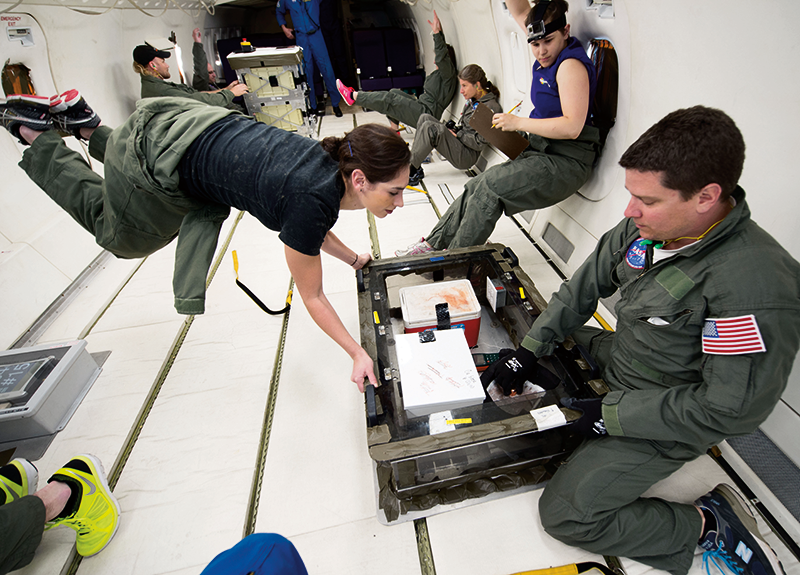Satellites, climate monitoring, and space junk
By Janice Cantieri (Medill '17)
Using satellite imagery to track and monitor the changes in Earth’s environment is becoming increasingly important as global temperatures continue to rise. Technological advancements can help ensure more persistent monitoring of Earth’s climate, and reduce waste in the space industry.
“Remote sensing satellites are used for a variety of applications including environmental monitoring, and to me that’s a really big piece in sustainability—understanding the climate is changing and monitoring everything from the polar ice caps to the impact of irrigation and farming in the Middle East,” says Bruce Stephenson (WCAS ’87), the chief strategy and corporate development officer for Maxar Technologies, a space systems and services company, and parent company of SSL, a commercial satellite maker. Stephenson is passionate about furthering sustainability efforts in every way he can. Several projects at SSL have the potential to advance sustainability efforts — both in space and on Earth. In addition to his work at Maxar, he has served on ISEN’s executive council since 2014, last year becoming its chairperson.
“I really believe in the mission and the importance of focusing on sustainability in a variety of ways; I think it’s one of the greatest issues that we’re facing globally. [Serving on ISEN’s executive council] was an opportunity to put those skills and experience to some good in an area I was passionate about,” he says.
Maxar is also the parent company of DigitalGlobe, a Colorado-based company that collects and analyzes high-resolution geospatial imagery. The company uses satellite imagery to closely monitor changes on Earth’s surface (e.g. deforestation, glacial melting, and intense droughts) and detect humanitarian crises.
DigitalGlobe’s satellites have already been used to help free slaves held captive on a fishing boat near Papua New Guinea in 2015, fight famine in south Sudan, and track the impact of natural disasters in Haiti and Tennessee. The ability to collect and analyze high-quality images allows for quick response to environmental changes or intervention during crises.
SSL is also developing on-orbit servicing technology that could extend the lifespans of these and other commercial and government satellites, and facilitate frequent updates and additions to the technology onboard.
In the past half-century, thousands of satellites have been launched to collect scientific data, monitor the environment, and provide communications services for governments and militaries. Currently, when these multimillion-dollar satellites need repairs or run out of chemical fuel, they are decommissioned, essentially becoming space junk. Even though the technology onboard may still be working, it gets tossed away with the spacecraft.
Depending on their proximity, satellites are either flown towards the Earth to burn up in the atmosphere, or propelled deeper into space to a place known as the “graveyard orbit,” a region more than 23,600 miles away, where satellite remains won’t pose a threat to other spacecraft.
SSL is creating an on-orbit servicing spacecraft with advanced robotic arms that can repair, reposition, inspect, and update satellites, entirely in space. Servicing could eliminate the need for governments and companies to invest millions—and sometimes billions—of dollars to design, build, and launch a replacement satellite every time a repair is needed or fuel runs out.
“On-orbit servicing is something that’s exciting and can really bring a lot of capabilities to the industry, reduce the cost, and increase flexibility for the satellites that our customers operate,” Stephenson says. “That will have significant impacts on communications — being able to get broadband internet out to the developing world and in remote regions where people don’t have access today, making it more affordable, and enabling more persistent monitoring of the environment so that we can be better informed and act on what we’re seeing.”
SSL is working with the Defense Advanced Research Projects Agency (DARPA), a branch of the Department of Defense, to develop the robotics for satellite inspection, repair, and repositioning, and SSL is adding the capabilities for satellite refueling.
“On-orbit servicing has the potential to reduce the number of launches and the number of satellites and payloads that need to be recaptured,” Stephenson said.
While servicing capabilities will primarily reduce the cost of satellite launches and allow satellite operators to update, repair, and construct satellites entirely in space, there are also sustainability benefits—it can lead to extended spacecraft lifespans and less waste in the space industry, he says.






